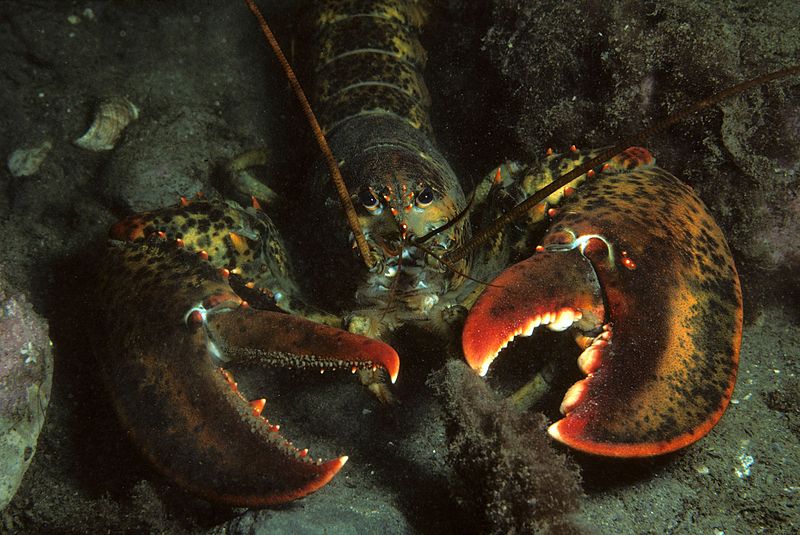
American Lobster Facts
- Firstly, the amazing American Lobster ranks as the heaviest of all known types of lobster. Not only that, but it also easily ranks as the largest of all known varieties of arthropod in the world.
- According to Guinness World Records, the heaviest crustacean on record is an American Lobster caught off Nova Scotia, Canada. This specimen weighed an incredible 44.4 lb (20.1 kg).
- Further, Thomas Say first identified it as a species in 1817. Its scientific name actually changed several times in the next 20 years. It also goes by several other common names, including the Maine Lobster and Northern Lobster.
- Finally, its numbers, despite being extensively fished, appear to still be sufficient and stable. Therefore, the IUCN presently lists the animal as Least Concern. However, like many species, that could change due to such factors as climate change.
Related Articles
Yeti Crab Pistol Shrimp Palau Nautilus
Photographer: Patrick Randall
CC License: https://bit.ly/2VPpnLY
American Lobster Physical Description
Most notably, the incredible American Lobster ranks as a true heavyweight among its kind. That’s because the remarkable variety of crustacean typically attains a weight of about 9 pounds (4.1 kg).
However, individual specimens sometimes weigh as much as an astounding 44 lb (20 kg). But, it has a distinctly compact body shape. As a result, despite the great weight, it averages a length of around 24 inches (61 cm).
In addition, the normal coloring of the animal remains a dark bluish green to greenish brown. That is a mix of yellow, blue, and red pigments. Yet, on rare occasions, other colors present themselves.
- Kingdom: Animalia
- Phylum: Arthropoda
- Class: Malacostraca
- Order: Decapoda
- Family: Nephropidae
- Genus: Homarus
- Species: H. americanus
American Lobster Distribution, Habitat, and Ecology
The American Lobster only appears to live in a relatively small range, along the Atlantic coast of North America. This is a region spanning Labrador in the north to Cape Hatteras, North Carolina, United States, in the south.
Furthermore, the species typically lives in comparatively shallow regions, at depths of no more than 13 – 164 ft (4 – 50 m). However, scattered populations sometimes live at depths of as much as 1,570 ft (480 m).
But, in both regions, it prefers to inhabit areas with numerous rocks and other such obstructions. That’s because such objects usually offer it a certain degree of protection form its predators.
The animal has a carnivorous diet that can vary from one location to another. But, it usually consists of echinoderms and various small mollusks. Yet, it sometimes also feeds on a variety of crustaceans.
Species Sharing Its Range
Barnacle Sea Spider Feather Starfish
Check out our other articles on 5 Phenomenal Sea Turtles, Thorny Dragon, Mou Waho Island, Mycena Chlorophos, Yunnan Golden Monkey, Shrill Carder Bee, Crowned Eagle

